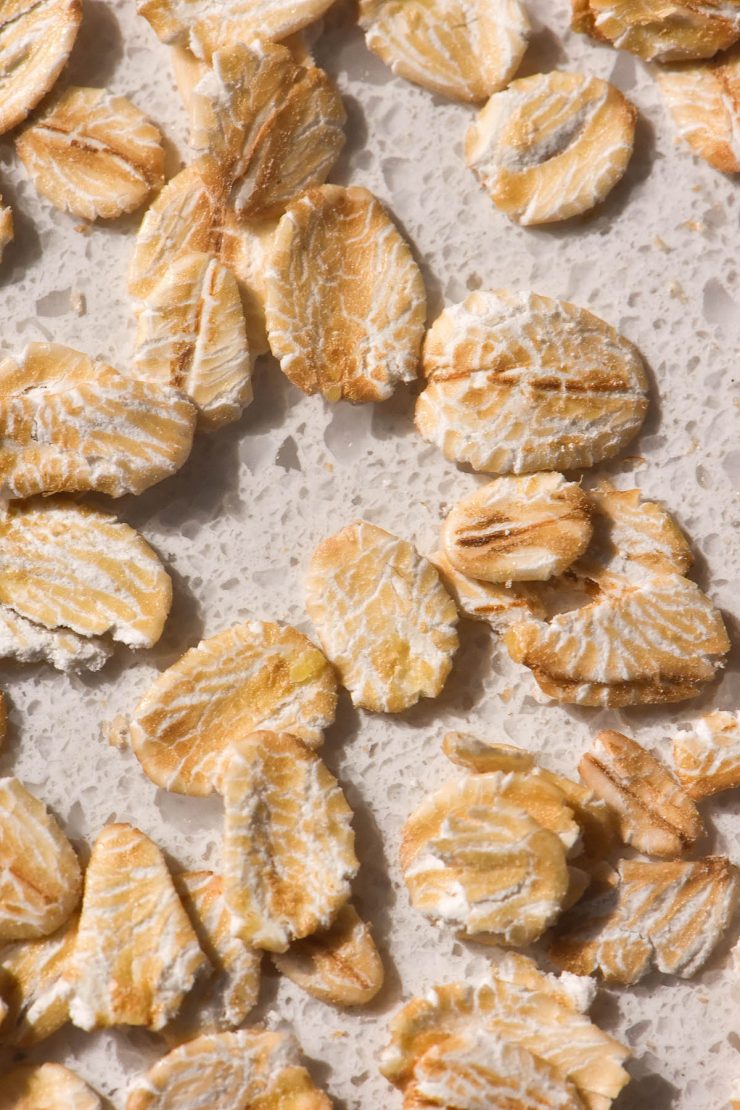
The FODMAP diet can be a minefield when it comes to choosing alternative proteins, protein powders and plant based milk and dairy products. Today I wanted to discuss a popular new milk: oat milk. So, we are asking the question: is oat milk low FODMAP?
A quick note, before we begin: I am not a doctor or a dietician. The purpose of this website as a whole is to provide recipes and tips for you in your day to day experience with the FODMAP diet. Nothing is meant to diagnose or provide medical advice, and you should always consult a professional before embarking on any elimination diet.
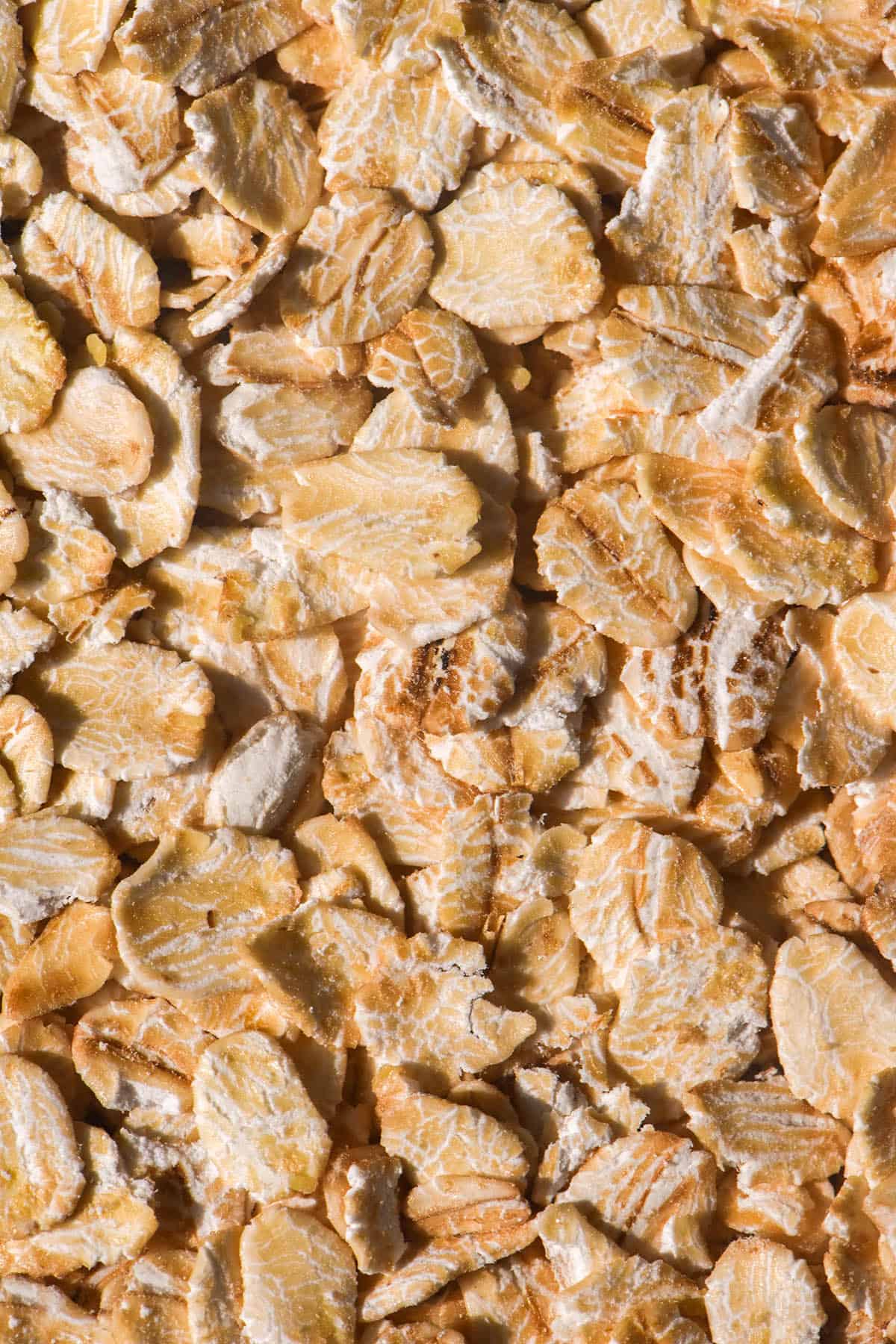
Is oat milk low FODMAP?
Oat milk has a low FODMAP threshold that differs depending on where the oat milk was produced. Australian oat milk is low FODMAP in 104g serves or approximately 6 Australian tablespoons. British oat milk has a slightly higher FODMAP threshold of 140g or 1/2 cup servings.
Monash explained part of the reasoning in a Facebook post in 2022. They said that the processing of oat milk results in high fructan and GOS levels of the British and Australian oat milks that they tested.
They didn’t explain, however, whether homemade oat milk is lower FODMAP or if gluten free oat milks would be lower FODMAP.
Given that Monash posits that the increased FODMAP content is the result of processing, it stands to reason that fresh, homemade oat milk is a lower FODMAP choice. As always, though, see what threshold works for you.
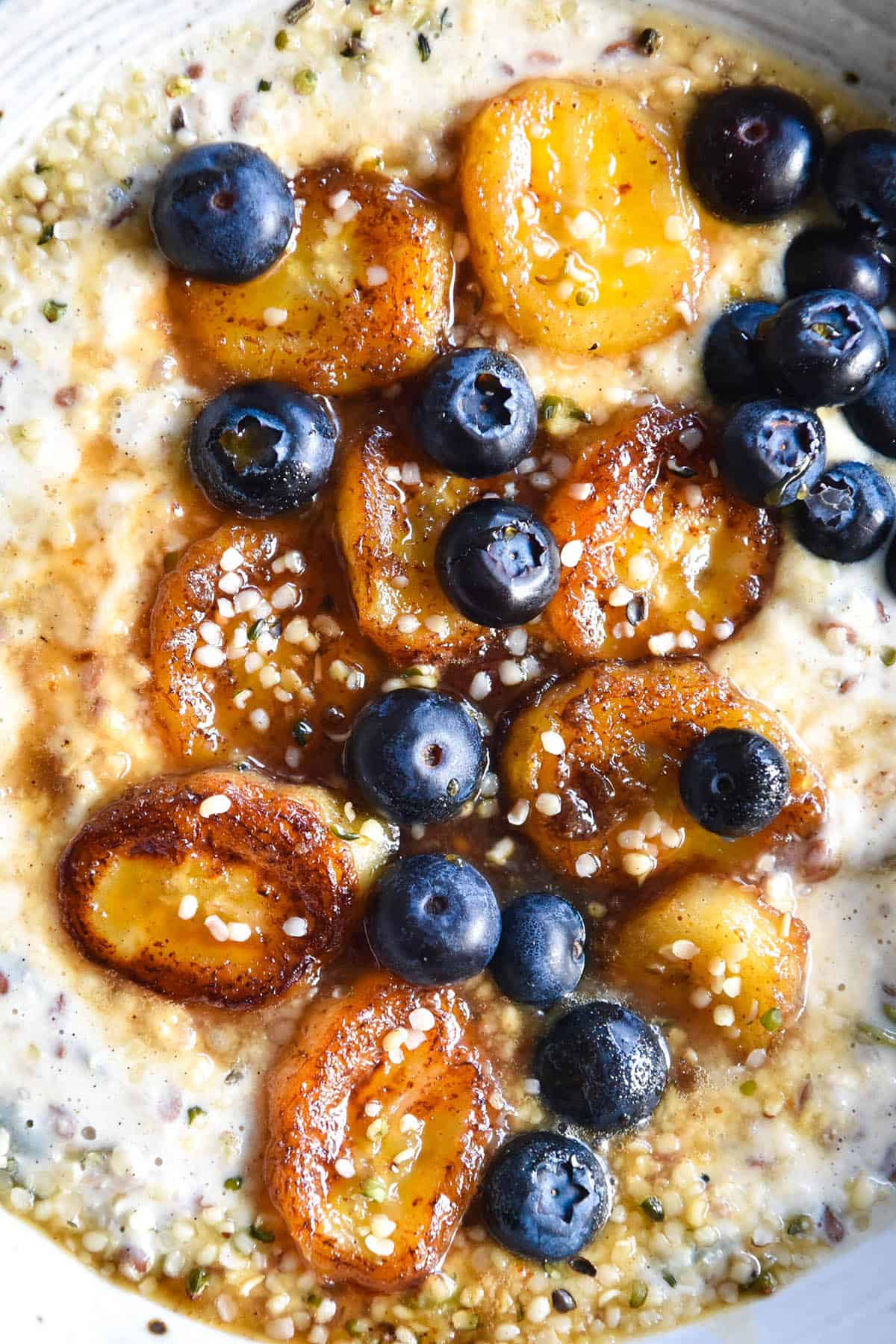
Is oat milk gluten free?
Whether oat milk is considered gluten free depends on where you live and how the oats are produced.
In Australia, oats are not considered gluten free. Oats contain avenin, which is a protein that is a distant relative to gluten. Coeliac Australia says that oats are not gluten free in Australia due to the potential that the protein might cause the same immune response as gluten in individuals with coeliac disease.
So, oats in Australia that have been grown and manufactured in dedicated gluten free facilities are wheat free, but not gluten free.
If you live in the USA or Europe, oats that have been grown and manufactured in dedicated gluten free facilities are considered gluten free. There are also some brands of oat milk that are gluten free, such at Oatly and Califia Farms.
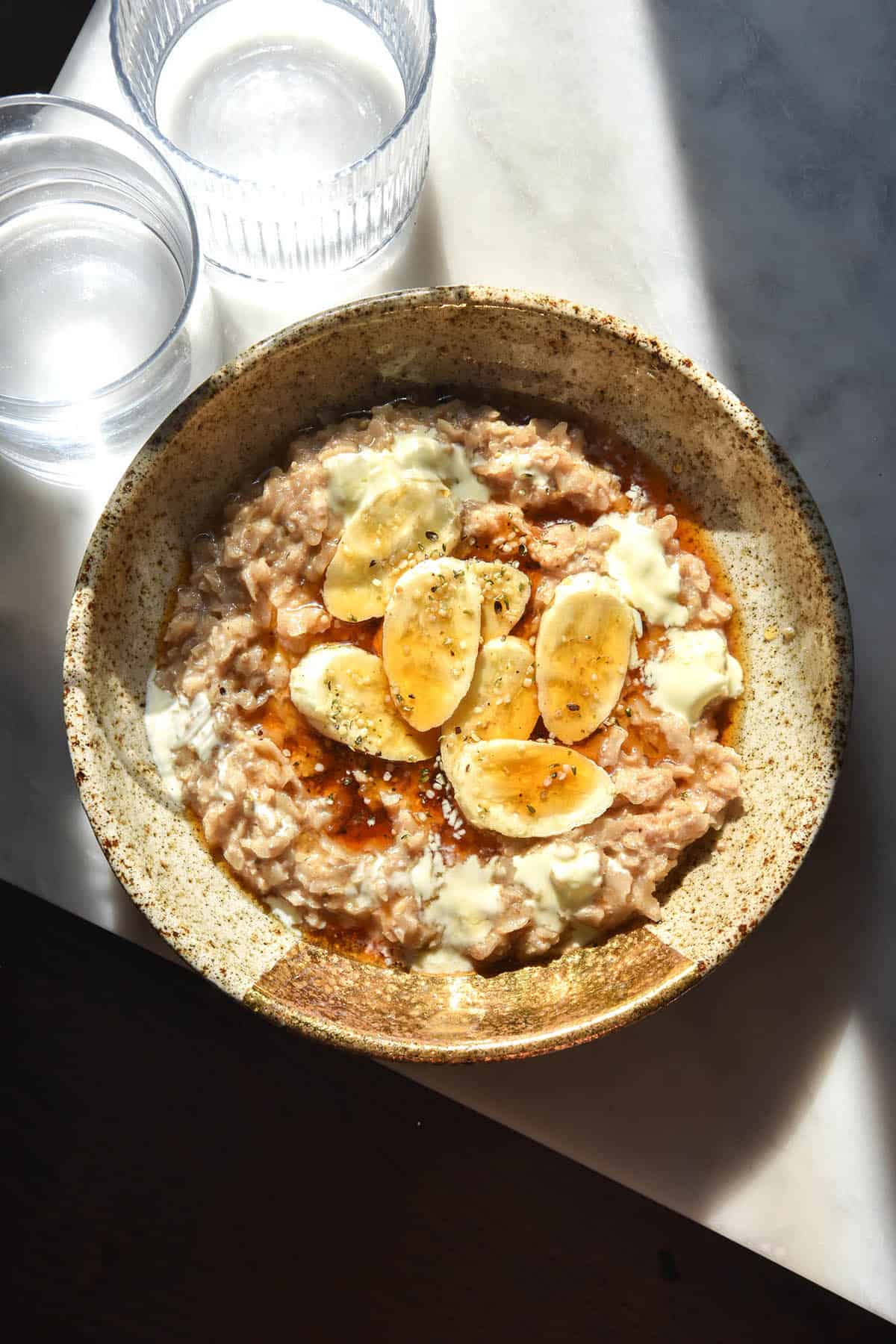
Is the low FODMAP diet a gluten free diet?
No, the FODMAP diet is not an 100% gluten free diet. However, because wheat containing grains are generally high in fructans, there is distinct crossover between the two diets.
Wheat based products are generally high FODMAP, and have to be avoided during the elimination phase. Once you assess a threshold that doesn’t cause you any symptoms, you can begin to reintegrate wheat based products if suitable.
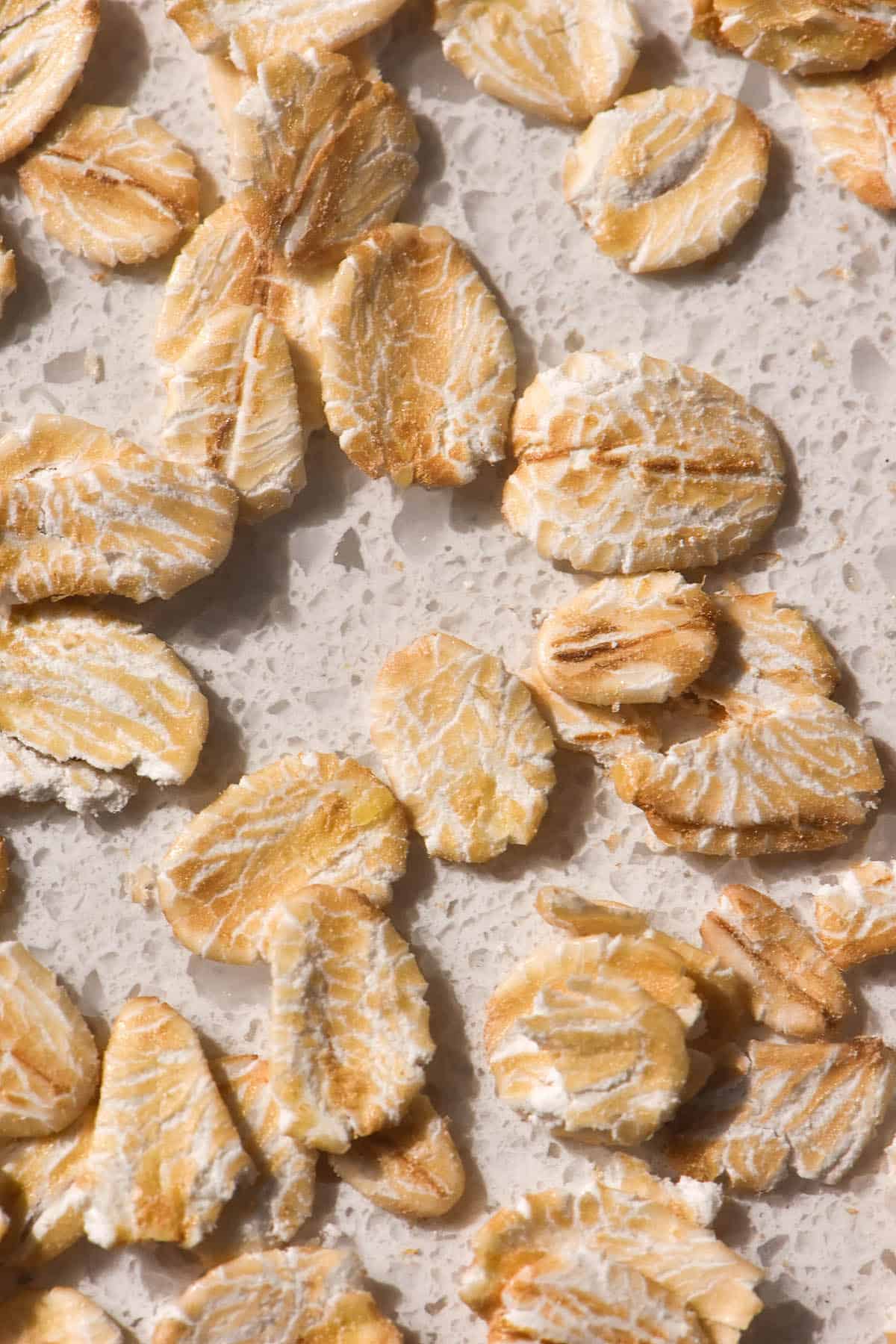
Tips for making non-slimy oat milk
As it turns out, it can be difficult to make oat milk at home without it turning into a slimy mess. While I was working on this post, I discovered a few tips that can help.
Firstly, I found that soaking the oat milk did not help at all. Some recipes recommend soaking the oats before blending, but I found that resulted in a really slimy milk. Personally, I recommend blending it up straight away.
Secondly, don’t squeeze the nut milk bag with too much vigour. I found that this encouraged the slime out of the oats and into the milk.
Thirdly, don’t use instant or quick oats. Rolled oats were less likely to cause the slimy effect.
You can also play around with baking the oats on a low temperature. This encourages the starches to dextrin. Converting starches to dextrin means that the oats have less starch available to form the slimy coating. This significantly cuts down on any slime in your oat milk. It does also, however, change the taste. Baked oats make for a more nutty and pronounced oat milk flavour.
Why does homemade oat milk become slimy?
Homemade oat milk is different to store bought oat milk. Generally speaking, store bought oat milk contains gums (like xanthan gum) and perhaps some enzymes.
Why enzymes? Oats contain starches that swell on contact with water. These swollen starches are what create the sticky, slimy aspect of oat milk. These sticky starches can be converted to dextrin with an enzyme. This is why commercial oat milks often use enzymes – to neutralise the starches and thus the slime.
Why is homemade oat milk less creamy?
Xanthan gum or guar gum are generally added to commercial oat milk. This addition has a few effects.
Firstly, it emulsifies the liquid to create a milk that doesn’t separate. This is unlike homemade oat milk, which needs to be shaken to emulsify after sitting in the fridge for a day or two.
Secondly, it makes the milk more creamy and frothy. Because xanthan gum thickens the milk, it gives it a creamier mouthfeel. The thickness and stability of the milk allows it to hold structure, so it’s easier to froth and retains it’s frothiness.
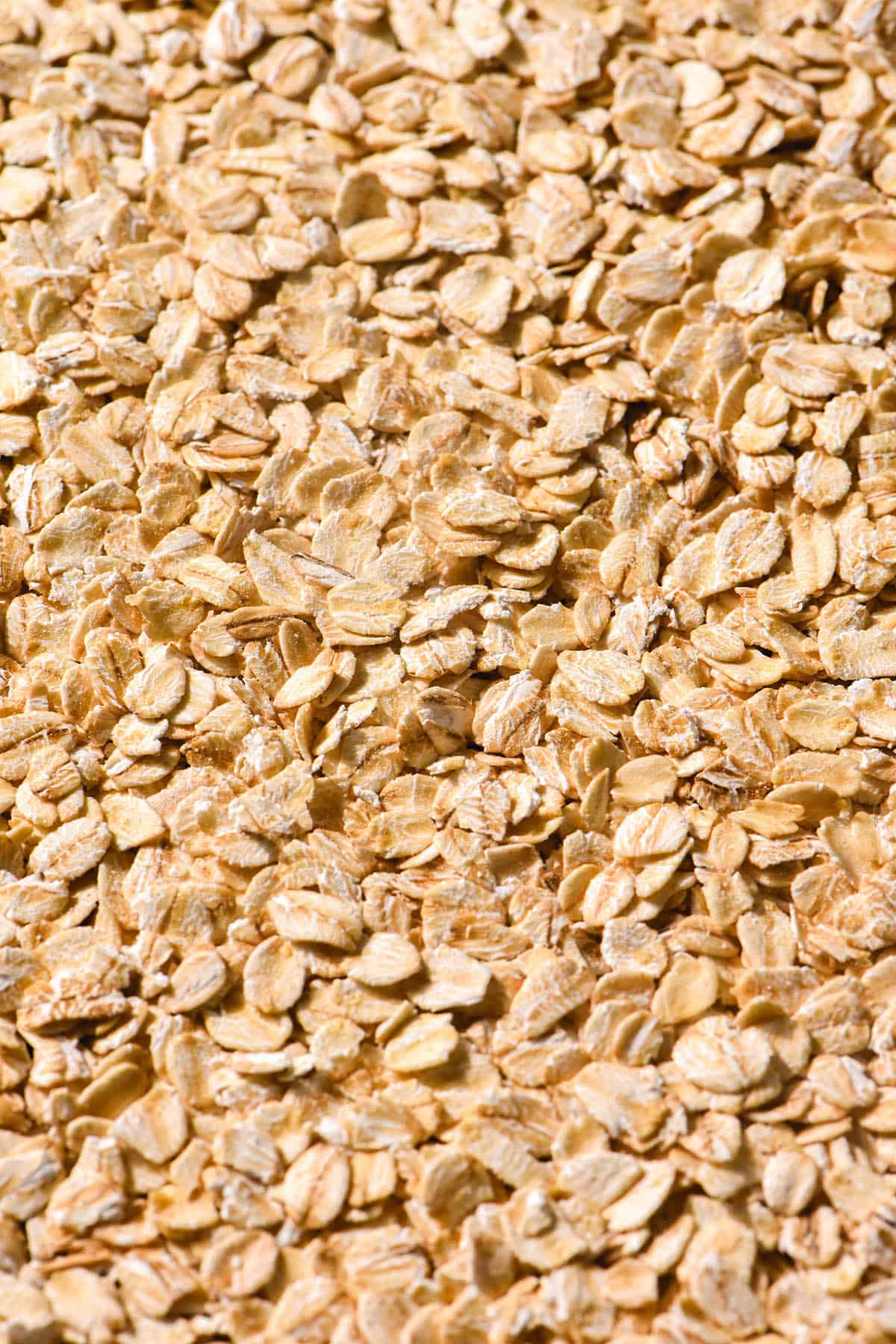

No Comments